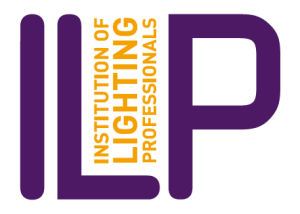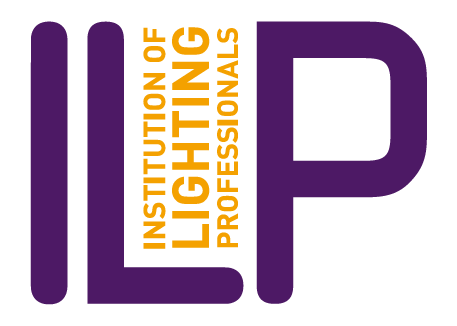At last year’s Centenary Lighting Summit, and in September’s edition of Lighting Journal, Allan Howard outlined the factors driving growing concerns around vehicle headlight glare at night and road safety. Here he revisits where we are, and what progress has been made to tackle this issue.
At the ILP’s Centenary Lighting Summit last June, I discussed the global concerns regarding the brightness of car head lights as well as other related issues, a presentation that was then reworked into an article in the September 2024 edition of Lighting Journal (‘Why I don’t like driving at night’, vol 89 no 9).
So, what has occurred since then? Essentially, not much further but with potentially a worsening situation.
But before we get into that it is worth just revisiting and reminding ourselves of the problem. People of all ages, but especially older drivers, have been stating for some time that they don’t like or increasingly avoid driving at night and this is predominantly related to glare from other vehicle headlights.
The latest RAC survey (February 2025) suggests that three-quarters of those who drive less at night now do so because of intense headlights making the experience uncomfortable or difficult. A further 49% stated that they feel less safe. You can find out more about these survey findings in the article that follows this one in this edition, on page 20.
Driving along a narrow road can be hard at the best of times but, when you are facing an oncoming glare source, determining where the verge is, and the edge of the oncoming vehicle, becomes more of a challenge.
INTERNATIONAL CONCERN
This is an international concern and the UNECE, a subsidiary body of the World Forum for Harmonization of Vehicle Regulations that prepares regulatory proposals on active safety, has set up a working party specifically regarding vehicle lighting and light-signalling. As part of this, a survey within Austria, Belgium, Switzerland and Germany indicates that:
- 71% of the respondents find the glare unbearable or annoying.
- 32% almost always or regularly feel dazzled.
- 51% of respondents pinch their eyes shut or even close them briefly.
- 58% have problems perceiving objects in the vicinity of the dazzling light source*.
- 30% stated that they continued to see an image of the light source for a limited time after passing it (afterimage), or even felt pain.*
(*Indication of physiological glare and restriction of perception/vision).
So, what is happening in the UK? The Department for Transport (DfT) has commissioned the Transport Research Laboratory to begin practice trials to assess the conditions that drivers complain about regarding glare from oncoming vehicles.
This project is due to report in the spring of this year. A research car is being used to measure the light levels that drivers are exposed to on the different UK road networks as well as other factors that need consideration, including but not limited to ambient lighting and weather conditions.
A working group has been set up for this, on which I am pleased to sit, to support this work as it develops.
So, that is the background and where we are at currently. But the findings of the RAC report indicate that 61% of drivers who suffer from headlight glare feel that the problem has worsened in the last 12 months. Why might this be?
We might expect that the light distribution from car headlights is consistent; the task requirement is the same so the optical performance should be similar.
This is not the case, and we know from research undertaken in Sweden that the distribution from headlights varies greatly, as the images below (figure 1) demonstrate. This is contributing to the glare that motorists are experiencing which might be considered in obtrusive light terms as spill light.
FOCUS NEEDS TO BE BEYOND HEADLIGHTS
Yet the problem is wider than this and I would argue that the focus on headlights approaching the driver alone is flawed; it is certainly a major issue but should not be considered in isolation.
As some within the media have observed, there seems to be something of an ‘arms race’ between vehicle manufacturers at the moment. We are seeing varied designs of daytime-running lights as well as rear lighting systems and smaller more intense brake lights.
Manufacturers are providing more external lighting that essentially serves no purpose except to be a glare source or make distance perception of the vehicle a problem. In this context, I refer to light bars running along the front of the bonnet joining up the headlights and the same on the rear of the car.
BMW, for example, has started to outline its distinctive grill with LEDs and the advertising for Vauxhall’s Grandland electric SUV now makes a feature over the fact that the Vauxhall badge lights up, as does the name Vauxhall on the rear. In its advertising, in fact, the manufacturer celebrates the vehicle’s ‘electric logo’ and its ‘50,000 intelligent LEDs’.
These manufacturers are not alone in this approach, and it seems that, with every new model released, more unnecessary and very bright lighting has been added.
You may say it is just a harmless sales gimmick. But, if we go back to the latest RAC report, of the 97% of drivers who told the association they were affected by glare in some form, eight in 10 (79%) said they now found it hard to tell when some vehicles were indicating.
A further 77% said they now found it difficult to judge the position of oncoming vehicles on the road when their headlights are so bright. Similar proportions were struggling to judge the speed of these vehicles (74%) and how far away they are (67%).
This is not just a factor of glare and, as I observed in my paper last year, there are other factors at play that need consideration.
DAYTIME-RUNNING LIGHTS
Daytime-running lights (DRL) and rear vehicle lights have fast become a brand identity for many car manufacturers. They are getting larger and brighter and can be made up of individual LEDs (non-uniform light source) or appear as one light source (uniform light source).
To understand one of the concerns with DRL, we first need to understand phantom arrays. This is an effect you experience when making rapid eye movements, what is termed a saccade, and the eye detects a series of multiple or ghost images.
This is particularly noticeable with both rear-tail lighting and daytime running lights. The effect is more evident if the lights are vertical, but shape and brightness contribute to the effect when seen.
A joint research project within the European Metrology Programme for Innovation and Research ‘Metrology for Temporal Light Modulation’ reports this to be a problem when drivers make rapid eye movements looking in their wing mirrors or to the side when at junctions.
The same could be said for pedestrians when looking to cross the road and who are looking to both sides rapidly. The results can be a reduction in the observer’s ability to judge distances between themselves and the vehicle being observed.
This effect and distance judgement can be worse when the rear lights are effectively joined up or are just a line of red light.
CONCLUSIONS
So, what is needed? For me, it comes down to the following three recommendations.
- We need to encourage the car industry to call a halt to the perceived arms race and listen and make changes. What can be brought in to make them do this rather than carry on making lights brighter and using this as a sales pitch?
- The DfT research is a start but the wider issues, as I have discussed, need to be brought into the programme.
- These are a lot of issues to unpick here, more than just bright headlights. We are at the start of a journey and the debate is underway with a great deal to be considered, researched and evidenced.
Allan Howard BEng(Hons) CEng FILP FSLL is group technical director, Lighting & Energy Solutions, at WSP
This is an abridged version of the article that appears in the April edition of Lighting Journal. To read the full article, simply click on the page-turner to your right.



